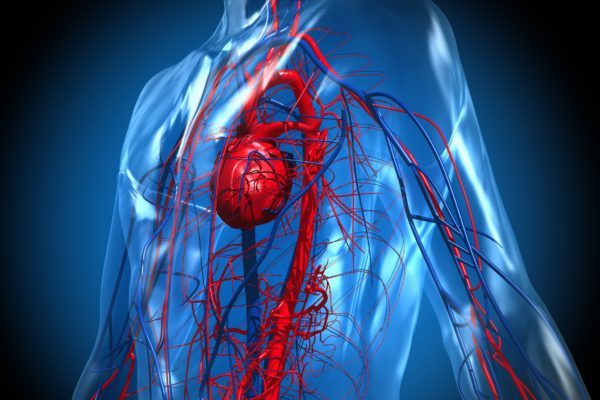
Stichting Zeldzame Bloedziekten
Autoimmune haemolytic anaemia (AIHA) is a group of rare but serious blood disorders. It is characterised by a malfunction of the immune system that produces autoantibodies. Normally, antibodies help to target foreign invaders such as bacteria and viruses. However, in the case of autoimmune disorders, autoantibodies are not able to distinguish between what is a foreign invader and what is produced naturally by the body, and will attack red blood cells as if they were substances foreign to the body as a result. The destruction of red blood cells (lysis) happens faster than the bone marrow can make new ones. Sometimes these red blood cells live for only a few days instead of their normal lifespan of 4 months. This causes anaemia.
Destruction of red blood cells by autoantibodies may occur suddenly or develop gradually. If caused by a virus, the destruction may stop after a period of time. If red blood cell destruction persists it becomes chronic.
There are two main types of autoimmune haemolytic anaemia:
• Warm antibody haemolytic anaemia: The autoantibodies attach to and destroy red blood cells at normal body temperature.
• Cold antibody haemolytic anaemia (cold agglutinin disease): The autoantibodies become most active and attack red blood cells only at temperatures well below normal body temperature (0-10°C).
Autoimmune haemolytic anaemia may occur without any symptoms. Especially when the destruction of red blood cells is mild and develops gradually. When the destruction is more severe or rapid, symptoms similar to those that occur with other types of anaemia may arise:
• Weakness and fatigue
• Headache and dizziness
• Pale skin
• Fast heartbeat (tachycardia)
• Shortness of breath
• Chest pain
• Chills
• Enlarged spleen, resulting in a sense of abdominal fullness and discomfort
• Jaundice (yellowing of the skin or whites of the eyes)
• Cold hands and feet in people with cold antibody hemolytic anemia
• Abdominal pain due to gallstones
• Severe pain in the back and legs, headache, vomiting, diarrhea, dark urine in people with paroxysmal cold hemoglobinuria
When the cause of autoimmune haemolytic anaemia is another disorder, symptoms of the underlying disorder, such as swollen and tender lymph nodes and fever, may dominate.
The causes of autoimmune haemolytic anaemia are poorly understood. The disease may be primary or secondary to another underlying illness. The primary illness is idiopathic, meaning the cause is unknown, and accounts for approximately 50% of cases. Idiopathic AIHA can be life-threatening because of its sudden onset. It requires immediate medical attention and hospitalisation. If AIHA isn’t idiopathic, it’s because it was caused by an underlying disease or medication, and considered secondary.
Secondary AIHA can result from many other illnesses. Warm and cold type AIHA each have their own common secondary causes. The most common causes of secondary warm-type AIHA include lymphoproliferative disorders (e.g., chronic lymphocytic leukemia, lymphoma) and other autoimmune disorders, such as:
• Systemic lupus erythematosus
• Rheumatoid arthritis
• Scleroderma
• Crohn’s disease
• Ulcerative colitis
Less common causes of warm-type AIHA include neoplasms other than lymphoid, and infection. Secondary cold type AIHA is also caused primarily by lymphoproliferative disorders, but is also commonly caused by infection, especially by:
• Mycoplasma
• Viral pneumonia
• Infectious mononucleosis
• Viruses such as Epstein-Barr, cytomegalovirus, HIV, and hepatitis
Drug-induced AIHA is rare and can be caused by a number of drugs, including:
• Penicillin (antibiotics)
• Methyldopa (hypertension medication)
• Quinine (antimalarial drug)
• Anti-inflammatory drugs
Diagnosis is made by first ruling out other causes of haemolytic anaemia, such as glucose-6-phosphate dehydrogenase deficiency, thalassaemia and sickle-cell disease. Previous medical history is important in identifying any underlying illness or medications that may have led to the disease.
The following laboratory investigations are then carried out:
• Blood tests:
o Direct antiglobulin (DAT) test to detect antibodies or complement proteins attached to the surface of red blood cells
o Complete blood count (CBC) with peripheral smear,
o Bilirubin, a natural byproduct of red blood cell breakdown. These levels become high when large numbers of red blood cells are destroyed.
o Haptoglobin levels decrease when large numbers of red blood cells are destroyed
o lactate dehydrogenase (LDH) (in particular with isoenzyme 1),
• Urinalysis
o 24-hour urine collection may reveal abnormalities in the urine
o Positive for urine hemoglobin.
Efficacy of treatment of AIHA depends on the correct diagnosis of either warm- or cold-type AIHA. Warm-type AIHA is usually not treatable by simply removing the underlying cause. Cold agglutinin disease is treated with avoidance of cold exposure. Paroxysmal cold haemoglobinuria is treated by removing the underlying cause, such as infection.
People with a sudden onset idiopathic AIHA will generally be hospitalised immediately because of its acute nature. Chronic cases may often come and go without explanation.
Treatment options for AIHA are:
• Corticosteroids (prednisone), the first-line treatment for warm-type AIHA to improve red blood cell counts. People with AIHA undergoing steroid therapy may need supplements during treatment. These could include:
o bisphosphonates
o vitamin D
o calcium
o folic acid
• Splenectomy for warm-type AIHA if steroids don’t work completely.
• Immunosuppressants (rituximab, danazol, cyclophosphamide, azathioprine, or cyclosporine) for warm and cold-type AIHA. Rituximab is an antibody that directly attacks specific proteins found on certain immune system cells.
• Avoidance of exposure to cold for cold-type AIHA hemoglobinuria.
• Blood transfusions when red blood cell destruction is severe.






